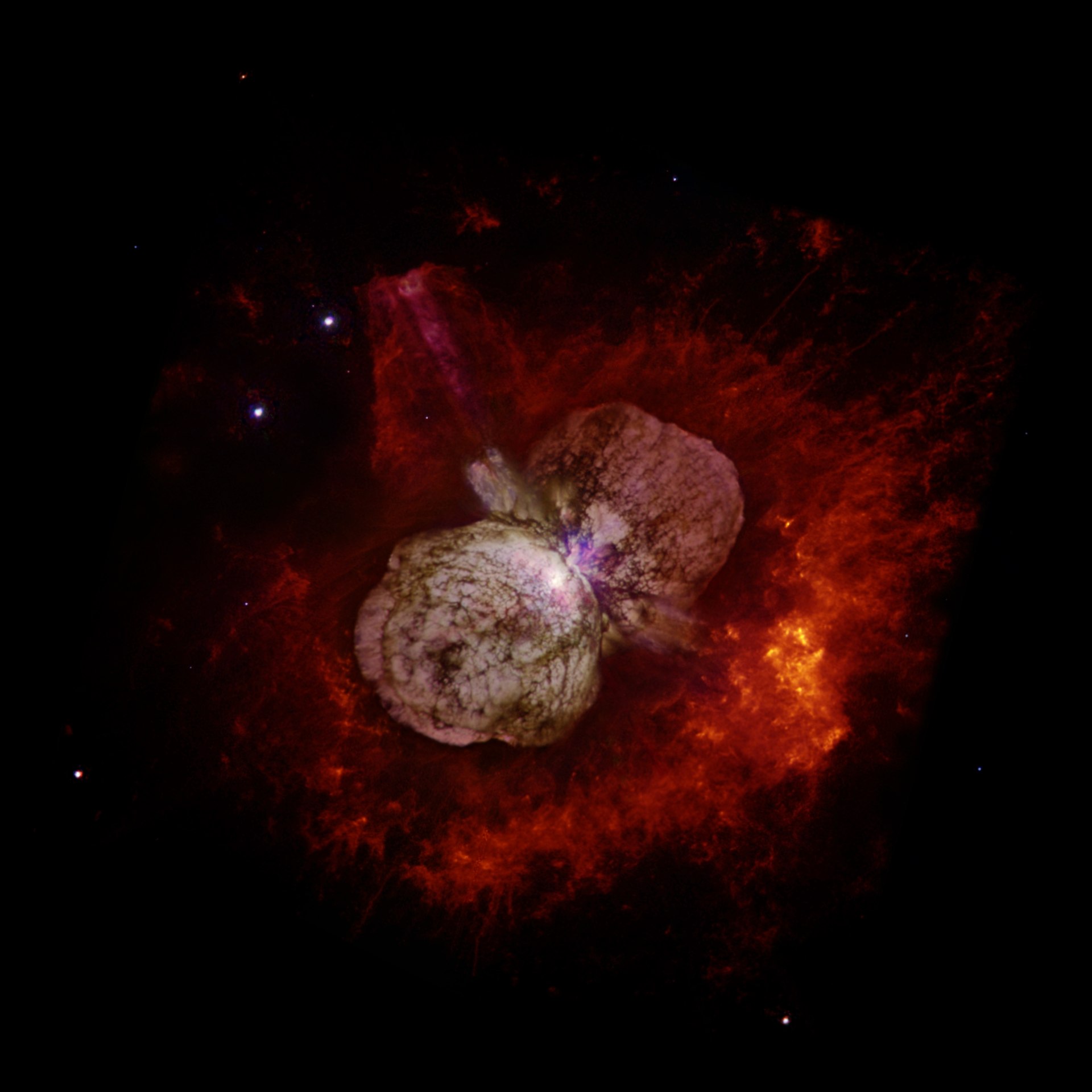Interacting Supernovae
Massive stars end their life in spectacular explosions called "Supernovae" (SNe). When these explosions are embedded in a thick cocoon surrounding gas, the light that reaches us looks different and the SNe are called SNe-IIn or "interacting supernovae". SNe-IIn have the potential to unveil precious information about how and why stars explode, the properties of the CSM and the mysterious question of which stars explode as SNe-IIn. The geometrical properties of the material around the supernova is an open question, as recent publications have cast doubts on the standard model of spherically-shaped matter distribution. Another piece of the puzzle is identifying the galaxies hosting SNe-IIn.

In Soumagnac et al. 2018, we have performed simulations of explosions occurring in a simple non-spherical structure of CSM and derived criteria to identify non-spherical CSM around SNe-IIn observed early and in multiple bands. We successfully applied these criteria to the SN-IIn PTF12glz. In Soumagnac et al. 2020 we applied this criterion to a sample of ZTF supernovae followed up with Swift in the UV, and showed that between 35% and 66% of the SNe IIn show evidence for aspherical CSM.